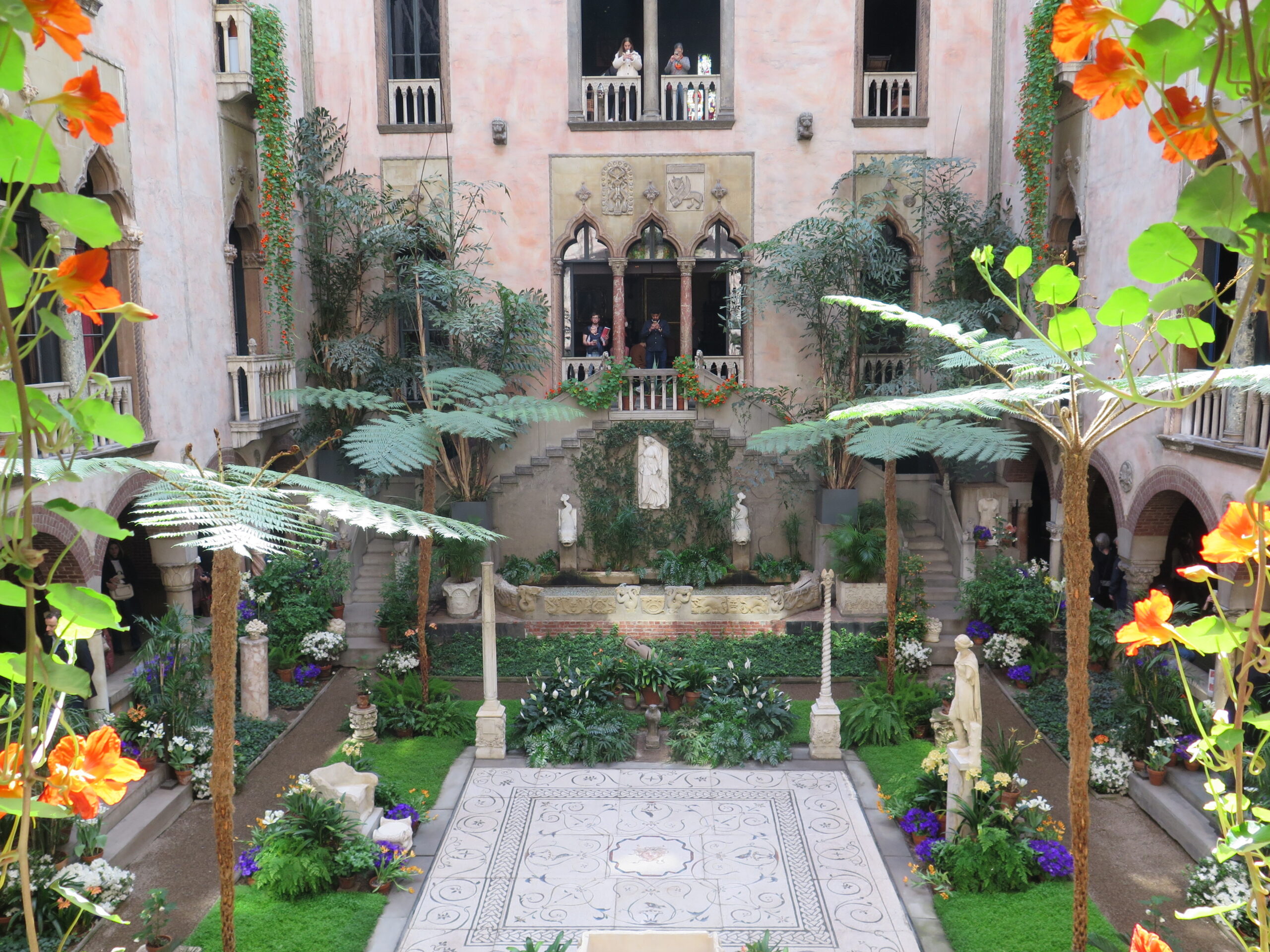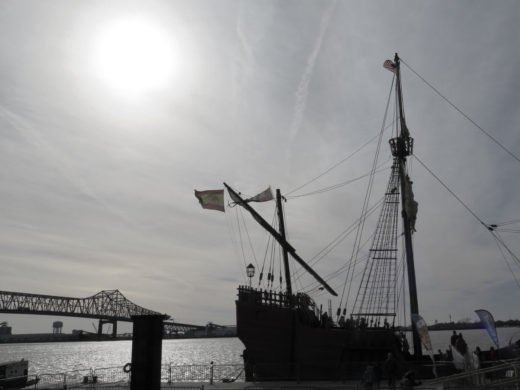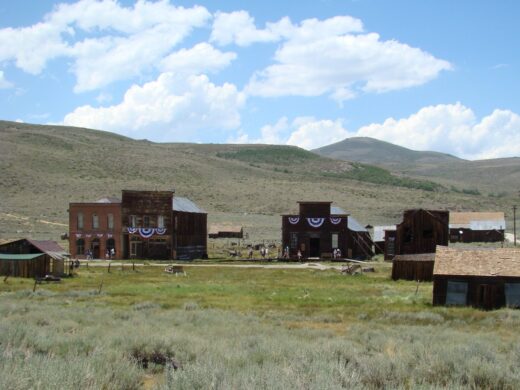Boston Art Gallery and Arboretum – 2022

In April, we visited Boston and went to several museums and attractions in the city. One visit was to the The Isabella Stewart Gardner Museum. According to their website, “Isabella Stewart Gardner collected and carefully displayed a collection comprised of more than 7500 paintings, sculptures, furniture, textiles, silver, ceramics, 1500 rare books, and 7000 archival objects-from ancient Rome, Medieval Europe, Renaissance Italy, Asia, the Islamic world and 19th-century France and America.” (https://www.gardnermuseum.org/experience/collection) It was a fascinating museum, needless to say. We spend the afternoon roaming through the rooms and halls of the huge 4-story home and museum and looking at the beautiful garden in the courtyard.
Isabella Stewart (1840 – 1924) was born into a wealthy family of a New York City merchant. Her father specialized in trading and importing Irish linen and he made a fortune in the shipping business and investments. Isabella inherited his fortune and moved to Boston, marrying a wealthy Bostonian named Jack Gardner, in 1860. After the death of her infant son, depression set in. Her husband encouraged her to travel abroad to help with her mood. She loved it and began to travel extensively — to Europe, Russia, Egypt and the Middle East. This led to an interest in collecting rare art artifacts ranging from Rembrandt paintings to old manuscripts, to oriental objects and medieval music instruments. This period of time was late 1800’s. Isabella often had male associates do the bidding for her art objects as it was frowned upon for a woman to engage in such activities.
Her husband, Jack Gardner, died suddenly in 1898 of a stroke. They had begun to plan for a larger museum as their home was no longer large enough to hold all the objects. Isabella continued the architercial planning and oversaw the building of the 4-story home/museum. It was located in the Fens area of Boston and was only one of a few buildings there at the time. The building is in the Italian style of architure. The 4-story museum was built in a square with a garden in the center. Isabella lived on the fourth floor. The museum opened to the public in 1903. Isabella arranged all the art objects. She specified that none be moved after she passed away.
We visited in April when when incredible nasteurum plants flowed from pots and down the walls of the 4-story museum. It is really magnificent to view.
Isabella staged this horticultural novelty every year for her birthday in April. It takes almost an entire year to produce the long vines. The nasteurum seeds are planted in a greenhouse in June or July. They are carefully monitored and only the strongest stock are allowed to grow. Flowers are “dead-headed” which means that blossoms are removed so that the plant does not go to seed. Rather, the vines continue to grow. It takes a group of horticultural workers to move the plants from the greenhouse to the museum. We visited at just the right time of the year!
Here you can see the flowers flowing down the walls of the museum into the inner garden.
Isabella Spencer-Gardner must have been quite a lady. She lived a privalaged life. According to the Boston Globe, “Mrs. Jack Gardner is one of the seven wonders of Boston. There is nobody like her in any city in this country. She is a millionaire Bohemienne. She is the leader of the smart set, but she often leads where none dare follow. She imitates nobody; everything she does is novel and original.” (https://www.gardnermuseum.org/experience/collection)
Although Isabelle had living quarters on the fourth floor, she often went to a basement hideaway for refuge. Her large collection of oriental objects is located here.
One aspect that Isabelle stipulated in her will was that none of the art objects or artifacts were to be labeled. In modern times, there is a narrative application which you can download to your cell phone which describes the objects. Otherwise, you are left to decipher written guides.
Isabelle did collect some fascinating, and rare paintings. This large portrait of Spain’s King Philip IV was painted in 1626-28 by Diego Velázquez, a painter now regarded as one of the three or four greatest of all time. Some have debated the authenticity of the artist. In any event, it is an impressive painting of this king. Especially impressive are the details of the king with his face’s meaty chin and thick Habsburg lip; his expressionless look.
And interestingly, photography is allowed as long as it is not flash photos.
Here’s another masterpiece. Titian’s “Rape of Europa” is considered to the the crown jewel of Isabelle’s collections. It was painted by the Venetian artist Titian, ca. 1560–1562. The subject has to do with the mythological story of the abduction of Europa by Zeus (Jupiter to the Romans). It was one of six paintings done by Titian along this theme commissioned by King Philip II. It was purchased by Bernard Berenson, art dealer, on behalf of art collector Isabella in 1896.
One large room in the museum contains several Rembrandt paintings. The 1990, a theft of 13 works of art from the Isabella Stewart Gardner Museum’s collection occurred in a brazen robbery. The remains unsolved. It was the subject of a Netflix’s documentary series. A $10 million reward is being offered. You can see the empty frames, the paintings were not replaced.
Isabella collected large textiles which hang on the walls of several of the rooms. This room also has contains an old, old harp.
This huge hall was intended to serve as a concert hall and several harpsicords are at one end of the room. All the rooms are dark, due to lack of overhead lighting. Although concerts are no longer held here, you can imagine the magical atmosphere of renaissance music being played.
All the rooms had large fireplaces, and as mentioned, no overhead lighting. This room contains a medieval coat of arms and portrait. Every room seemed like it’s own eclectic theme of exhibits.
And that concludes our self-guided tour through three floors of the museum. An adjacent building houses holds rotating exhibits of contemporary artists. What a contrast. In all, it was quite an afternoon!
I am sure we will return! See the gallery for more photos.



